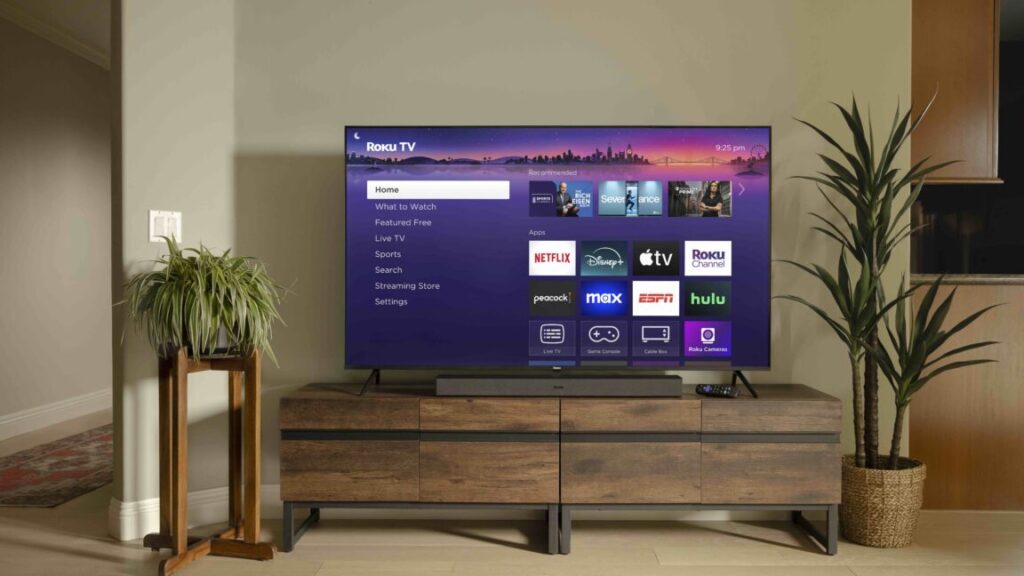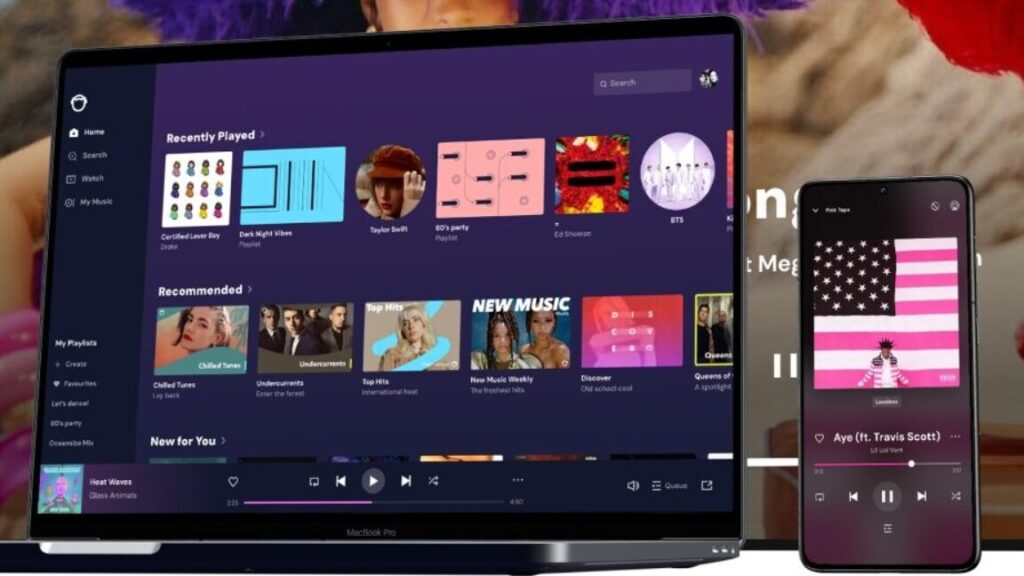Breaking down why Apple TVs are privacy advocates’ go-to streaming device
Every time I write an article about the escalating advertising and tracking on today’s TVs, someone brings up Apple TV boxes. Among smart TVs, streaming sticks, and other streaming devices, Apple TVs are largely viewed as a safe haven.
“Just disconnect your TV from the Internet and use an Apple TV box.”
That’s the common guidance you’ll hear from Ars readers for those seeking the joys of streaming without giving up too much privacy. Based on our research and the experts we’ve consulted, that advice is pretty solid, as Apple TVs offer significantly more privacy than other streaming hardware providers.
But how private are Apple TV boxes, really? Apple TVs don’t use automatic content recognition (ACR, a user-tracking technology leveraged by nearly all smart TVs and streaming devices), but could that change? And what about the software that Apple TV users do use—could those apps provide information about you to advertisers or Apple?
In this article, we’ll delve into what makes the Apple TV’s privacy stand out and examine whether users should expect the limited ads and enhanced privacy to last forever.
Apple TV boxes limit tracking out of the box
One of the simplest ways Apple TVs ensure better privacy is through their setup process, during which you can disable Siri, location tracking, and sending analytics data to Apple. During setup, users also receive several opportunities to review Apple’s data and privacy policies. Also off by default is the boxes’ ability to send voice input data to Apple.
Most other streaming devices require users to navigate through pages of settings to disable similar tracking capabilities, which most people are unlikely to do. Apple’s approach creates a line of defense against snooping, even for those unaware of how invasive smart devices can be.
Apple TVs running tvOS 14.5 and later also make third-party app tracking more difficult by requiring such apps to request permission before they can track users.
“If you choose Ask App Not to Track, the app developer can’t access the system advertising identifier (IDFA), which is often used to track,” Apple says. “The app is also not permitted to track your activity using other information that identifies you or your device, like your email address.”
Users can access the Apple TV settings and disable the ability of third-party apps to ask permission for tracking. However, Apple could further enhance privacy by enabling this setting by default.
The Apple TV also lets users control which apps can access the set-top box’s Bluetooth functionality, photos, music, and HomeKit data (if applicable), and the remote’s microphone.
“Apple’s primary business model isn’t dependent on selling targeted ads, so it has somewhat less incentive to harvest and monetize incredible amounts of your data,” said RJ Cross, director of the consumer privacy program at the Public Interest Research Group (PIRG). “I personally trust them more with my data than other tech companies.”
What if you share analytics data?
If you allow your Apple TV to share analytics data with Apple or app developers, that data won’t be personally identifiable, Apple says. Any collected personal data is “not logged at all, removed from reports before they’re sent to Apple, or protected by techniques, such as differential privacy,” Apple says.
Differential privacy, which injects noise into collected data, is one of the most common methods used for anonymizing data. In support documentation (PDF), Apple details its use of differential privacy:
The first step we take is to privatize the information using local differential privacy on the user’s device. The purpose of privatization is to assure that Apple’s servers don’t receive clear data. Device identifiers are removed from the data, and it is transmitted to Apple over an encrypted channel. The Apple analysis system ingests the differentially private contributions, dropping IP addresses and other metadata. The final stage is aggregation, where the privatized records are processed to compute the relevant statistics, and the aggregate statistics are then shared with relevant Apple teams. Both the ingestion and aggregation stages are performed in a restricted access environment so even the privatized data isn’t broadly accessible to Apple employees.
What if you use an Apple account with your Apple TV?
Another factor to consider is Apple’s privacy policy regarding Apple accounts, formerly Apple IDs.
Apple support documentation says you “need” an Apple account to use an Apple TV, but you can use the hardware without one. Still, it’s common for people to log into Apple accounts on their Apple TV boxes because it makes it easier to link with other Apple products. Another reason someone might link an Apple TV box with an Apple account is to use the Apple TV app, a common way to stream on Apple TV boxes.
So what type of data does Apple harvest from Apple accounts? According to its privacy policy, the company gathers usage data, such as “data about your activity on and use of” Apple offerings, including “app launches within our services…; browsing history; search history; [and] product interaction.”
Other types of data Apple may collect from Apple accounts include transaction information (Apple says this is “data about purchases of Apple products and services or transactions facilitated by Apple, including purchases on Apple platforms”), account information (“including email address, devices registered, account status, and age”), device information (including serial number and browser type), contact information (including physical address and phone number), and payment information (including bank details). None of that is surprising considering the type of data needed to make an Apple account work.
Many Apple TV users can expect Apple to gather more data from their Apple account usage on other devices, such as iPhones or Macs. However, if you use the same Apple account across multiple devices, Apple recognizes that all the data it has collected from, for example, your iPhone activity, also applies to you as an Apple TV user.
A potential workaround could be maintaining multiple Apple accounts. With an Apple account solely dedicated to your Apple TV box and Apple TV hardware and software tracking disabled as much as possible, Apple would have minimal data to ascribe to you as an Apple TV owner. You can also use your Apple TV box without an Apple account, but then you won’t be able to use the Apple TV app, one of the device’s key features.
Data collection via the Apple TV app
You can download third-party apps like Netflix and Hulu onto an Apple TV box, but most TV and movie watching on Apple TV boxes likely occurs via the Apple TV app. The app is necessary for watching content on the Apple TV+ streaming service, but it also drives usage by providing access to the libraries of many (but not all) popular streaming apps in one location. So understanding the Apple TV app’s privacy policy is critical to evaluating how private Apple TV activity truly is.
As expected, some of the data the app gathers is necessary for the software to work. That includes, according to the app’s privacy policy, “information about your purchases, downloads, activity in the Apple TV app, the content you watch, and where you watch it in the Apple TV app and in connected apps on any of your supported devices.” That all makes sense for ensuring that the app remembers things like which episode of Severance you’re on across devices.
Apple collects other data, though, that isn’t necessary for functionality. It says it gathers data on things like the “features you use (for example, Continue Watching or Library),” content pages you view, how you interact with notifications, and approximate location information (that Apple says doesn’t identify users) to help improve the app.
Additionally, Apple tracks the terms you search for within the app, per its policy:
We use Apple TV search data to improve models that power Apple TV. For example, aggregate Apple TV search queries are used to fine-tune the Apple TV search model.
This data usage is less intrusive than that of other streaming devices, which might track your activity and then sell that data to third-party advertisers. But some people may be hesitant about having any of their activities tracked to benefit a multi-trillion-dollar conglomerate.
Data collected from the Apple TV app used for ads
By default, the Apple TV app also tracks “what you watch, your purchases, subscriptions, downloads, browsing, and other activities in the Apple TV app” to make personalized content recommendations. Content recommendations aren’t ads in the traditional sense but instead provide a way for Apple to push you toward products by analyzing data it has on you.
You can disable the Apple TV app’s personalized recommendations, but it’s a little harder than you might expect since you can’t do it through the app. Instead, you need to go to the Apple TV settings and then select Apps > TV > Use Play History > Off.
The most privacy-conscious users may wish that personalized recommendations were off by default. Darío Maestro, senior legal fellow at the nonprofit Surveillance Technology Oversight Project (STOP), noted to Ars that even though Apple TV users can opt out of personalized content recommendations, “many will not realize they can.”
Apple can also use data it gathers on you from the Apple TV app to serve traditional ads. If you allow your Apple TV box to track your location, the Apple TV app can also track your location. That data can “be used to serve geographically relevant ads,” according to the Apple TV app privacy policy. Location tracking, however, is off by default on Apple TV boxes.
Apple’s tvOS doesn’t have integrated ads. For comparison, some TV OSes, like Roku OS and LG’s webOS, show ads on the OS’s home screen and/or when showing screensavers.
But data gathered from the Apple TV app can still help Apple’s advertising efforts. This can happen if you allow personalized ads in other Apple apps serving targeted apps, such as Apple News, the App Store, or Stocks. In such cases, Apple may apply data gathered from the Apple TV app, “including information about the movies and TV shows you purchase from Apple, to serve ads in those apps that are more relevant to you,” the Apple TV app privacy policy says.
Apple also provides third-party advertisers and strategic partners with “non-personal data” gathered from the Apple TV app:
We provide some non-personal data to our advertisers and strategic partners that work with Apple to provide our products and services, help Apple market to customers, and sell ads on Apple’s behalf to display on the App Store and Apple News and Stocks.
Apple also shares non-personal data from the Apple TV with third parties, such as content owners, so they can pay royalties, gauge how much people are watching their shows or movies, “and improve their associated products and services,” Apple says.
Apple’s policy notes:
For example, we may share non-personal data about your transactions, viewing activity, and region, as well as aggregated user demographics[,] such as age group and gender (which may be inferred from information such as your name and salutation in your Apple Account), to Apple TV strategic partners, such as content owners, so that they can measure the performance of their creative work [and] meet royalty and accounting requirements.
When reached for comment, an Apple spokesperson told Ars that Apple TV users can clear their play history from the app.
All that said, the Apple TV app still shares far less data with third parties than other streaming apps. Netflix, for example, says it discloses some personal information to advertising companies “in order to select Advertisements shown on Netflix, to facilitate interaction with Advertisements, and to measure and improve effectiveness of Advertisements.”
Warner Bros. Discovery says it discloses information about Max viewers “with advertisers, ad agencies, ad networks and platforms, and other companies to provide advertising to you based on your interests.” And Disney+ users have Nielsen tracking on by default.
What if you use Siri?
You can easily deactivate Siri when setting up an Apple TV. But those who opt to keep the voice assistant and the ability to control Apple TV with their voice take somewhat of a privacy hit.
According to the privacy policy accessible in Apple TV boxes’ settings, Apple boxes automatically send all Siri requests to Apple’s servers. If you opt into using Siri data to “Improve Siri and Dictation,” Apple will store your audio data. If you opt out, audio data won’t be stored, but per the policy:
In all cases, transcripts of your interactions will be sent to Apple to process your requests and may be stored by Apple.
Apple TV boxes also send audio and transcriptions of dictation input to Apple servers for processing. Apple says it doesn’t store the audio but may store transcriptions of the audio.
If you opt to “Improve Siri and Dictation,” Apple says your history of voice requests isn’t tied to your Apple account or email. But Apple is vague about how long it may store data related to voice input performed with the Apple TV if you choose this option.
The policy states:
Your request history, which includes transcripts and any related request data, is associated with a random identifier for up to six months and is not tied to your Apple Account or email address. After six months, you request history is disassociated from the random identifier and may be retained for up to two years. Apple may use this data to develop and improve Siri, Dictation, Search, and limited other language processing functionality in Apple products …
Apple may also review a subset of the transcripts of your interactions and this … may be kept beyond two years for the ongoing improvements of products and services.
Apple promises not to use Siri and voice data to build marketing profiles or sell them to third parties, but it hasn’t always adhered to that commitment. In January, Apple agreed to pay $95 million to settle a class-action lawsuit accusing Siri of recording private conversations and sharing them with third parties for targeted ads. In 2019, contractors reported hearing private conversations and recorded sex via Siri-gathered audio.
Outside of Apple, we’ve seen voice request data used questionably, including in criminal trials and by corporate employees. Siri and dictation data also represent additional ways a person’s Apple TV usage might be unexpectedly analyzed to fuel Apple’s business.
Automatic content recognition
Apple TVs aren’t preloaded with automatic content recognition (ACR), an Apple spokesperson confirmed to Ars, another plus for privacy advocates. But ACR is software, so Apple could technically add it to Apple TV boxes via a software update at some point.
Sherman Li, the founder of Enswers, the company that first put ACR in Samsung TVs, confirmed to Ars that it’s technically possible for Apple to add ACR to already-purchased Apple boxes. Years ago, Enswers retroactively added ACR to other types of streaming hardware, including Samsung and LG smart TVs. (Enswers was acquired by Gracenote, which Nielsen now owns.)
In general, though, there are challenges to adding ACR to hardware that people already own, Li explained:
Everyone believes, in theory, you can add ACR anywhere you want at any time because it’s software, but because of the way [hardware is] architected… the interplay between the chipsets, like the SoCs, and the firmware is different in a lot of situations.
Li pointed to numerous variables that could prevent ACR from being retroactively added to any type of streaming hardware, “including access to video frame buffers, audio streams, networking connectivity, security protocols, OSes, and app interface communication layers, especially at different levels of the stack in these devices, depending on the implementation.”
Due to the complexity of Apple TV boxes, Li suspects it would be difficult to add ACR to already-purchased Apple TVs. It would likely be simpler for Apple to release a new box with ACR if it ever decided to go down that route.
If Apple were to add ACR to old or new Apple TV boxes, the devices would be far less private, and the move would be highly unpopular and eliminate one of the Apple TV’s biggest draws.
However, Apple reportedly has a growing interest in advertising to streaming subscribers. The Apple TV+ streaming service doesn’t currently show commercials, but the company is rumored to be exploring a potential ad tier. The suspicions stem from a reported meeting between Apple and the United Kingdom’s ratings body, Barb, to discuss how it might track ads on Apple TV+, according to a July report from The Telegraph.
Since 2023, Apple has also hired several prominent names in advertising, including a former head of advertising at NBCUniversal and a new head of video ad sales. Further, Apple TV+ is one of the few streaming services to remain ad-free, and it’s reported to be losing Apple $1 billion per year since its launch.
One day soon, Apple may have much more reason to care about advertising in streaming and being able to track the activities of people who use its streaming offerings. That has implications for Apple TV box users.
“The more Apple creeps into the targeted ads space, the less I’ll trust them to uphold their privacy promises. You can imagine Apple TV being a natural progression for selling ads,” PIRG’s Cross said.
Somewhat ironically, Apple has marketed its approach to privacy as a positive for advertisers.
“Apple’s commitment to privacy and personal relevancy builds trust amongst readers, driving a willingness to engage with content and ads alike,” Apple’s advertising guide for buying ads on Apple News and Stocks reads.
The most private streaming gadget
It remains technologically possible for Apple to introduce intrusive tracking or ads to Apple TV boxes, but for now, the streaming devices are more private than the vast majority of alternatives, save for dumb TVs (which are incredibly hard to find these days). And if Apple follows its own policies, much of the data it gathers should be kept in-house.
However, those with strong privacy concerns should be aware that Apple does track certain tvOS activities, especially those that happen through Apple accounts, voice interaction, or the Apple TV app. And while most of Apple’s streaming hardware and software settings prioritize privacy by default, some advocates believe there’s room for improvement.
For example, STOP’s Maestro said:
Unlike in the [European Union], where the upcoming Data Act will set clearer rules on transfers of data generated by smart devices, the US has no real legislation governing what happens with your data once it reaches Apple’s servers. Users are left with little way to verify those privacy promises.
Maestro suggested that Apple could address these concerns by making it easier for people to conduct security research on smart device software. “Allowing the development of alternative or modified software that can evaluate privacy settings could also increase user trust and better uphold Apple’s public commitment to privacy,” Maestro said.
There are ways to limit the amount of data that advertisers can get from your Apple TV. But if you use the Apple TV app, Apple can use your activity to help make business decisions—and therefore money.
As you might expect from a device that connects to the Internet and lets you stream shows and movies, Apple TV boxes aren’t totally incapable of tracking you. But they’re still the best recommendation for streaming users seeking hardware with more privacy and fewer ads.
Breaking down why Apple TVs are privacy advocates’ go-to streaming device Read More »















